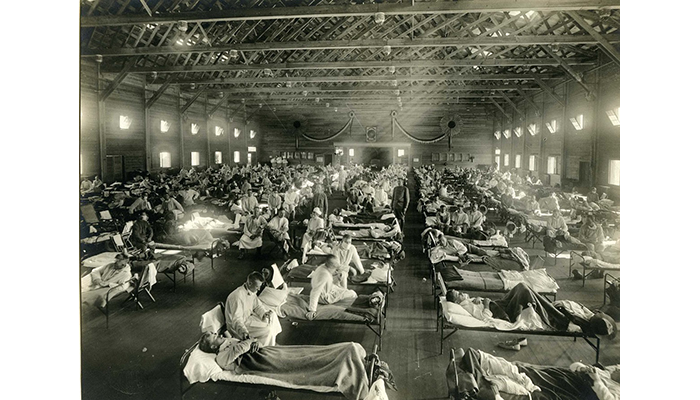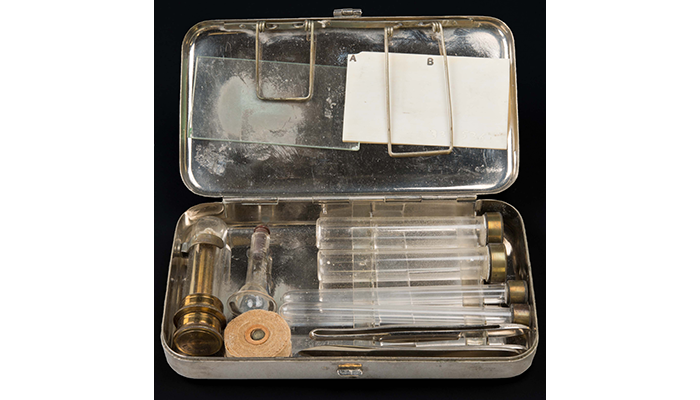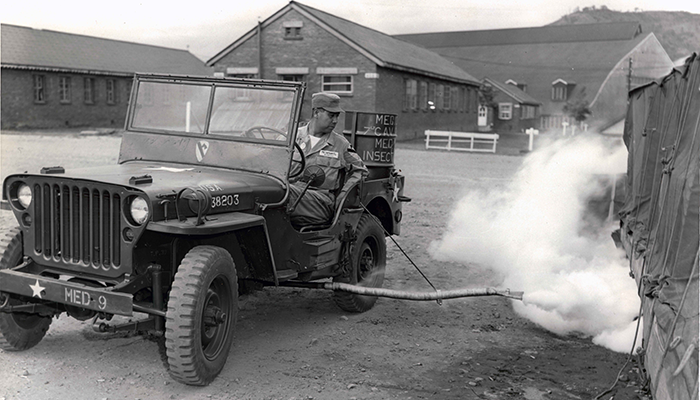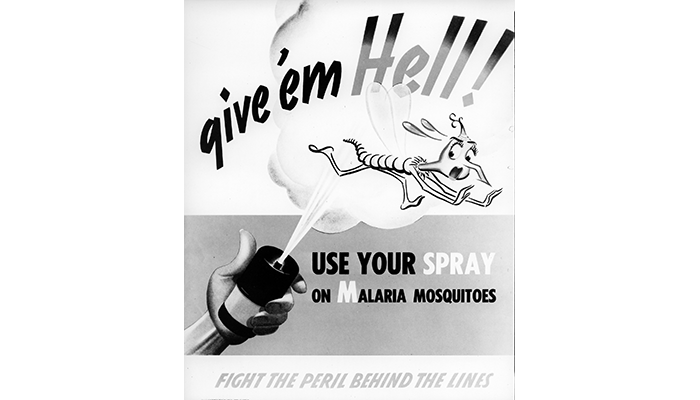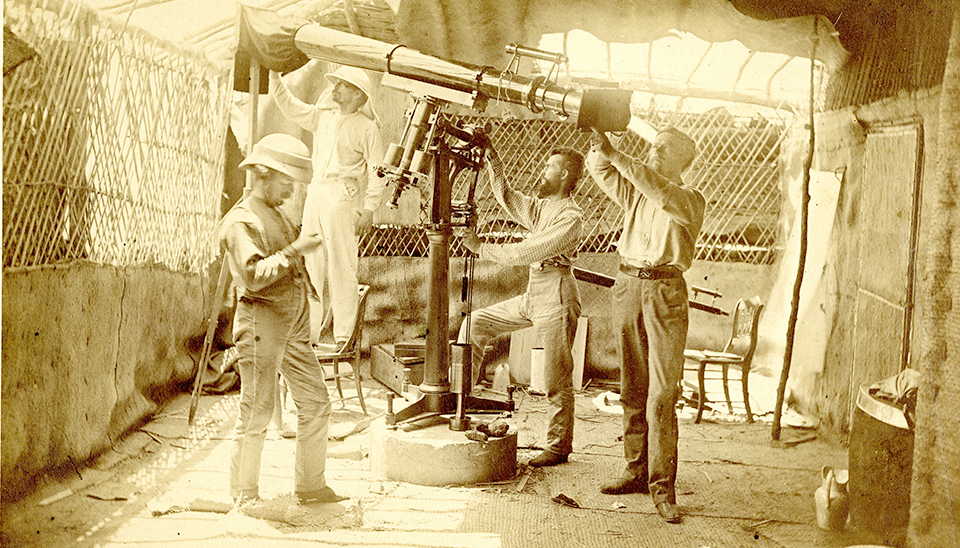Since the American Revolutionary War, the U.S. military has fought beyond the battlefield to protect against infectious diseases that threaten both warfighter and civilian safety. Throughout history, the development and application of vaccines for diseases like smallpox, yellow fever, typhoid fever and more have served as a vital tool to combat global health threats.
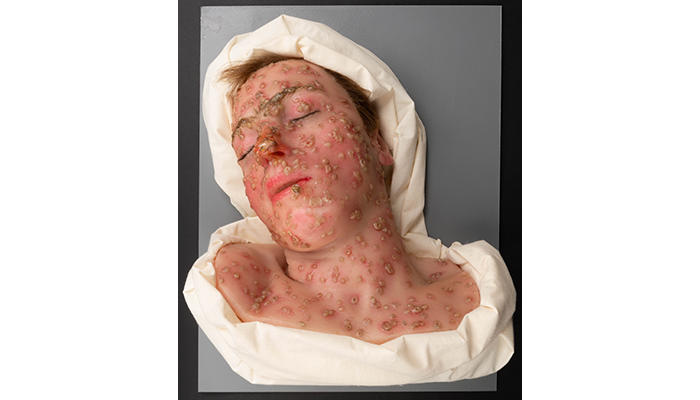
Life size wax moulage made by William Gottheil in 1917 depicting smallpox lesions on the face of a 15-year-old boy. Model depicts smallpox during the eruptive phase, six to seven days after infection. Wax models are used as a medical resource to illustrate diseases for students to learn how to identify them. (180801-D-MP902-0014: Department of Defense photo by Matthew Breitbart)
SMALLPOX
The U.S. military first confronted the crippling effects of infectious disease during the American Revolutionary War, when clashes with British troops exposed American soldiers to smallpox. Most British soldiers were already immune due to the widespread practice of inoculation in the British military; inoculation is the direct introduction of a weakened form of the disease (see figure 1). The Continental Army, however, was at a disadvantage. In one case in 1776, 5,000 out of 10,000 Continental Army soldiers contracted smallpox, forcing a retreat.

Figure 1. Vaccination lancet with folding tortoise shell handle. Lancets were used in variolation or inoculation, a method used to prevent smallpox by introducing the material from a smallpox pustule or scab into the skin. This would generally produce a less severe infection and induce immunity. (140219-A-MP902-033: Department of Defense photo illustration by Matthew Breitbart)
As a result, in 1777, George Washington ordered a mandatory inoculation for troops. The compulsory inoculation and later vaccination of U.S. troops would continue through World War II until 1990.
Even as U.S. smallpox rates dropped to the point of eradication in the 1950s, major smallpox vaccination programs continued at military training camps to ensure the health and safety of the troops who went abroad. Devices such as the multi-dose jet injector, "Press-o-Jet," provided a more effective and efficient way to conduct large-scale vaccination efforts as more vaccines were developed and required by the military.
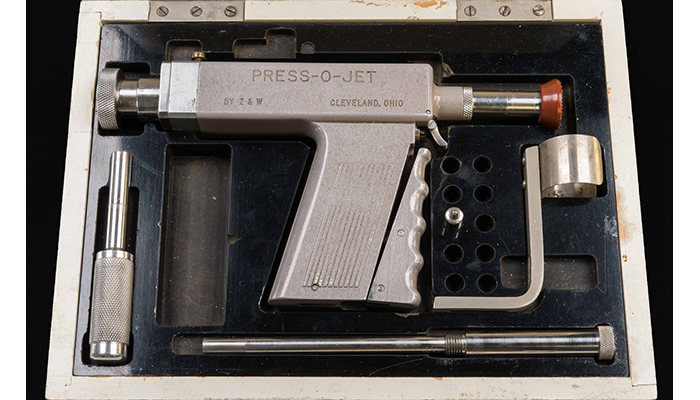
Press-O-Jet jet injector gun (with accessories), circa 1956. By the time of the Vietnam War, injectors distributed vaccines and medications on a large scale. The Walter Reed Army Institute of Research prototyped this example. (140219-A-MP902-043: Department of Defense photo illustration by Matthew Breitbart)
TYPHOID
Smallpox wasn't the only infectious disease to make its way into American forces. Typhoid fever tore through the ranks of the U.S. during the Spanish-American War in 1898, infecting one out of every five men. It continued to plague military and civilian populations in its aftermath. Staff of the Army Medical Museum (precursor to the National Museum of Health and Medicine) played a critical role in combatting this enemy.
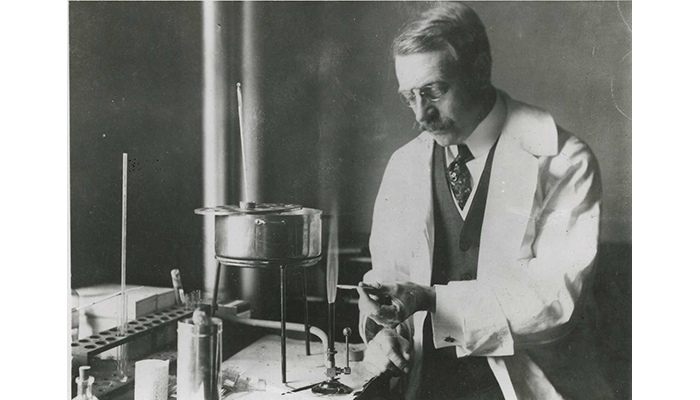
Dr. Frederick Fuller Russell, a central figure in the development of a successful anti-typhoid vaccine. This vaccine was both developed and tested at the Army Medical Museum. A room in the museum was transformed into Russell's laboratory. When the time came to test the new vaccine, a group of museum employees volunteered their services. (Reeve 42708)
The sixth curator of the museum, Lt. James Carroll, began experimenting with a typhoid vaccine in 1904, a charge that Maj. Frederick Russell took over when he became curator in 1907. Russell assembled a vaccine laboratory in the museum and vaccinated volunteers of both the museum and Army Medical School in clinical trials.
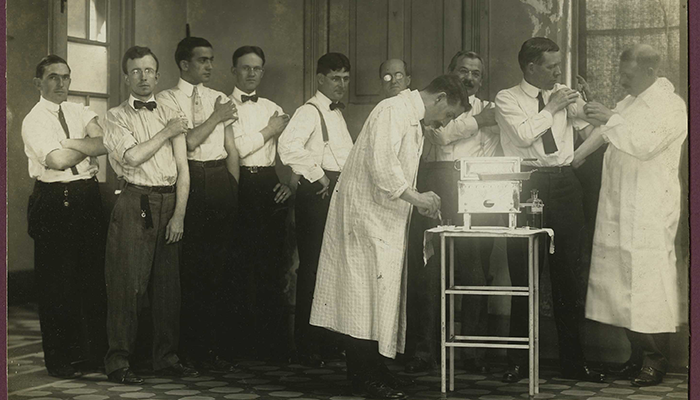
Maj. Russell (far right) vaccinating Army Medical Museum staff who had volunteered to test an experimental typhoid vaccine (ca. 1909). This photo was taken at the Army Medical Museum's "Old Red Brick" building on what became the National Mall in Washington, D.C. (Reeve 096414)
In 1911, 20,000 vaccinations were undertaken with no negative reactions resulting in a compulsory typhoid vaccination for entry in the U.S. Army.
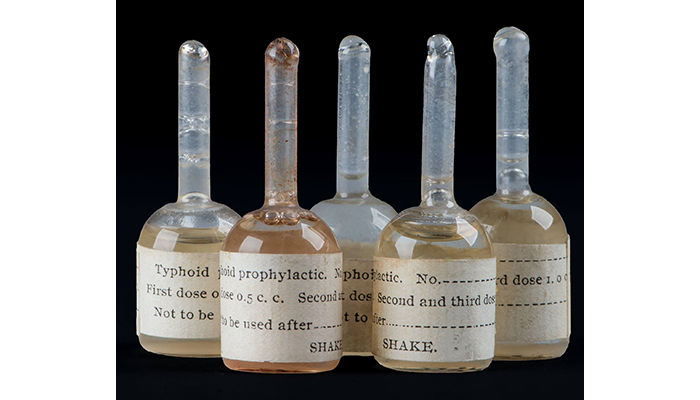
Ampoules of the typhoid vaccine tested by Maj. Frederick Russell at the Army Medical Museum in 1909. As a result of the clinical trial, the U.S. Army was the first military branch worldwide to be vaccinated against typhoid. (Department of Defense photo by Matthew Breitbart)
YELLOW FEVER
The U.S. military also made significant gains in the struggle against yellow fever. In 1900, the U.S. Army Yellow Fever Commission, led by Maj. Walter Reed, confirmed that a specific variety of mosquito (Aedes Aegypti) was the transmitter of the infection. This realization led to a massive, coordinated effort by the military to control and eradicate the mosquito population, especially in problematic areas outside the U.S.
Following the discovery of the yellow fever vector, the military conducted experiments isolating the virus. These experiments contributed to the body of research that helped establish a vaccine in the 1930s. In 1937, South African-born American virologist and physician Max Theiler cultivated the 17D vaccine against yellow fever, a vaccine that is still in use today.
INFLUENZA
In 1918, a worldwide influenza pandemic killed between 21 and 50 million people. In the United States, more than 25 percent of the population became ill, and approximately 1 in every 67 soldiers in the U.S. military died. The development of a vaccine became a high priority.
In 1945, following successful clinical trials conducted with military recruit volunteers, the work of Dr. Thomas Francis Jr. and Dr. Jones Salk yielded the first influenza vaccine approved for military use. Civilian use was approved the following year in 1946, and to this day, the Centers for Disease Control and the Military Health System recommend getting an annual seasonal influenza vaccination.
MALARIA
In recent years, the military continues to develop and produce new technology and medicine that aids in the vaccination of numerous diseases. Currently, the military is researching a pressing global health threat: malaria.
Infecting thousands of service members during World War II, the Korean War, and the conflict in Vietnam, malaria accounts for a combined total of approximately 1,135,000 cases according to the Armed Forces Health Surveillance Branch. In recent years, heightened vigilance, preventive measures, and treatment have reduced cases of malaria; however, the disease remains a threat to the health of service members abroad.
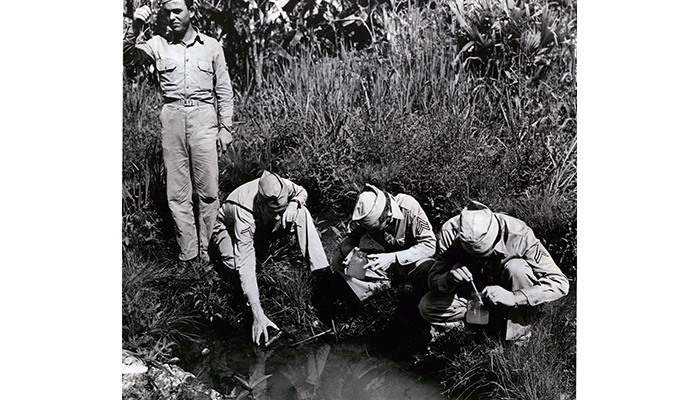
Dipping their specimen jars into a roadside puddle, these Medical Corps "mosquito boys" search for signs of the "Anopheles Albiamanue," Panama's most prominent malaria bearing mosquito. (Panama Canal zone, December, 11, 1942) (SC 162968)
In 2018, a total of 58 service members were reported to have malaria, a 65.7 percent increase from 2017, according to the February 2019 Medical Surveillance Monthly Report. Looking to fight the increase in malaria infections, among other diseases, research labs, like the Walter Reed Army Institute of Research, continue to investigate and produce new vaccines to prevent infection in military personnel.

Resources
Bayne-Jones, S. The Evolution of Preventive Medicine in the United States Army, 1607-1939. Office of the Surgeon General, Department of the Army, 1968.
https://achh.army.mil/history/book-misc-evprev-default
Benenson, Abram S. "Immunization and Military Medicine." University of Chicago, 1984.
Grabenstein, John D., Pittman, Phillip R., Greenwood, John T. Renata J.M. Engler. "Immunization to Protect the U.S. Armed Forces: Heritage, Current Practice, Prospects." Office of the Surgeon General, Department of the Army, 2005.
https://apps.dtic.mil/dtic/tr/fulltext/u2/a495556.pdf
Henry, Robert S. The Armed Forces Institute of Pathology: Its First Century, 1862-1962. Office of the Surgeon General, Department of the Army, 1964.
Relevant Links:
Army Research Lab Leads Antimalarial Pharmaceutical Research Mission
Closing in on a Killer: Scientists Unlock Clues to the Spanish Influenza Virus
Edward Jenner and the History of Smallpox and Vaccination by Stefan Riedel
https://www.ncbi.nlm.nih.gov/pmc/articles/PMC1200696/
The Peace Gun and the Eradication of Smallpox by Gwen Nelmes
https://doi.org/10.7205/MILMED-D-16-00364
The Yellow Fever Vaccine: A History by J. Gordon Frierson
https://www.ncbi.nlm.nih.gov/pmc/articles/PMC2892770/
Medical Surveillance Monthly Report Archives
https://health.mil/Military-Health-Topics/Combat-Support/Armed-Forces-Health-Surveillance-Branch/Reports-and-Publications/~/link.aspx?_id=534E26BD8E5D4ECC8CAA8ABA47679691&_z=z



